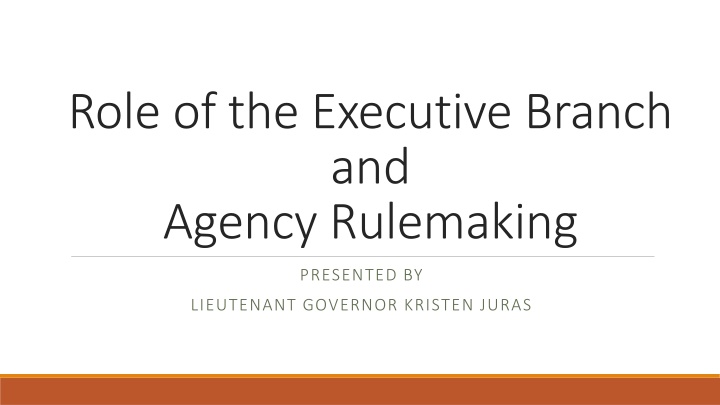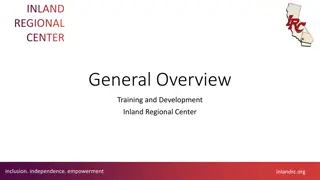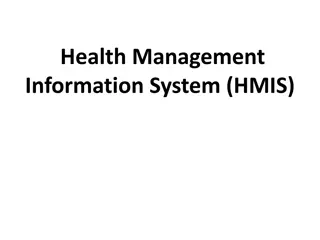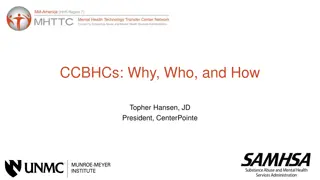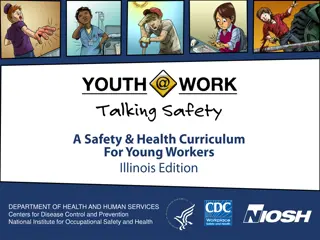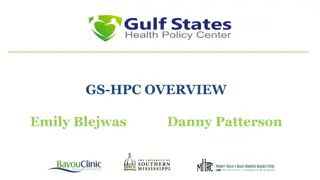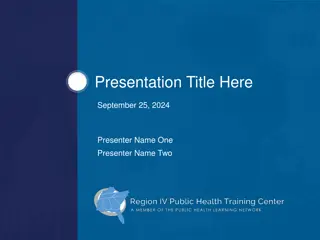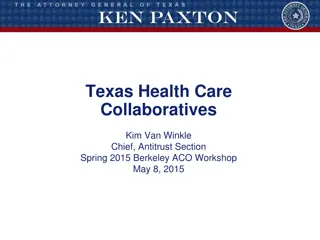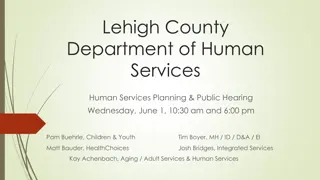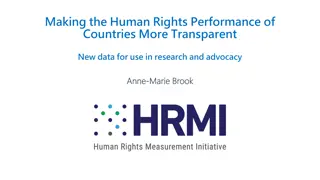Health and Human Services Delivery Center Initiatives
This document outlines the initiatives, key system requirements, and architecture considerations for the Health and Human Services Delivery Center, covering business problems, solutions, outcomes, and system requirements impacting the HHSDC domains.
Download Presentation

Please find below an Image/Link to download the presentation.
The content on the website is provided AS IS for your information and personal use only. It may not be sold, licensed, or shared on other websites without obtaining consent from the author.If you encounter any issues during the download, it is possible that the publisher has removed the file from their server.
You are allowed to download the files provided on this website for personal or commercial use, subject to the condition that they are used lawfully. All files are the property of their respective owners.
The content on the website is provided AS IS for your information and personal use only. It may not be sold, licensed, or shared on other websites without obtaining consent from the author.
E N D
Presentation Transcript
Role of the Executive Branch and Agency Rulemaking PRESENTED BY LIEUTENANT GOVERNOR KRISTEN JURAS
The executive branch includes: governor, lieutenant governor, secretary of state, attorney general, superintendent of public instruction, and auditor Executive Branch (Art. VI, Section 1)
Duties of Executive Officers (Art. VI, Section 4) Governor: faithfully execute the laws of the state; chief executive officer of the state (2-15-104, MCA); other duties as provided by law. Lieutenant governor: perform the duties delegated by the governor; other duties as provided by law. Secretary of state: maintains official records and seal; other duties as provided by law. Attorney general: the state s legal officer; other duties as provided by law. Superintendent and auditor: duties as provided by law.
Departments The Constitution limits the number of executive branch agencies to not more than 20 principal departments (in addition to the constitutional offices) (Art VI, Sec 7). Two departments, the Department of Agriculture and Department of Labor & Industry, are established by the Constitution. (Art XII, Sec 1 & 2). See 2-15-104, MCA, for a list of 16 principal departments. The legislature determines the functions, powers, and duties of each department (Art. VI, Sec 7). The governor appoints all department heads, subject to confirmation by the Senate (Art VI, Sec 8).
Other Agencies In addition to the principal departments, the legislature has established more than 160 boards, commissions, and committees: These agencies are administratively attached to one of the principal departments or to a constitutional office. The Constitution has established several agencies: judicial standards commission (Art VII, Sec 11), board of land commissioners (Art X, Sec 4), board of education composed of the board of regents of higher education and the board of public education (Art X, Sec 9)
Governors Veto Power (Art VI, Sec 10) Each bill passed by the legislature is submitted to the governor for his signature. Exceptions: bills proposing amendments to the Montana constitution, bills ratifying proposed amendments to the United States constitution, resolutions, and initiative and referendum measures If the governor does not sign or veto the bill within 10 days after its delivery, it becomes law. If the governor vetoes a bill, it must be returned to the legislature with a statement of the reasons for vetoing the bill. If two-thirds of the members of each house present approve the vetoed bill, the veto is overridden and the bill becomes law.
If the legislature is not in session when the governor vetoes a bill, and the bill was passed by at least two-thirds of the members present, a veto poll process is conducted by the secretary of state If less than two-thirds of the members approved the bill, the secretary of state does not conduct a veto poll. Post-Session Veto Process (Art VI, Sec The secretary of state sends out a veto poll to all legislators by mail, with a copy of the governor's veto message. 10(4)) If two-thirds or more of the members of each house return to the secretary a vote to override the veto, the bill becomes law.
If a bill contains several distinct items of appropriation of money, the governor may disapprove one or more items while approving other portions of the bill (a line- item veto). Line-Item Vetoes (Art VI, Sec 10(5); 5-4-303, MCA) If an item is disapproved, the governor must provide a statement of the items objected to and the reasons for the objections. In considering the governor s line-item veto, the items objected to must be separately reconsidered in the same manner as other vetoed bills.
Amendatory Vetoes (MCA 5-4-304) The governor may return any bill to the originating house with the governor's recommendations for amendment. If both houses approve the governor's recommendations, the bill is returned to the governor for reconsideration. If both houses disapprove the governor's recommendations, the bill must be returned to the governor for reconsideration. If one house disapproves the governor's recommendations and the other house approves, then either house may request a conference committee, which may be a free conference committee: If both houses adopt a conference committee report, the bill, in accordance with the report, must be returned to the governor for reconsideration. If a conference committee fails to reach agreement or if its report is not adopted by both houses, the governor's recommendations are considered not approved and the bill must be returned to the governor for further consideration. The governor may not return a bill for amendment a second time.
The governor must submit a budget prior to each legislative session (Art. VI, Sec. 9). The governor may convene a special session of the legislature (Art VI, Sec. 11). Other Governor Duties/Powers The governor may grant pardons and commutations of sentences (Art VI, Sec. 12). The governor is commander-in-chief of the militia forces of the state (Art VI, Sec. 13).
Agency Rulemaking Authority The functions, powers, and duties of each state agency are determined by the legislature (Art. VI, Sec. 7). An agency may NOT adopt rules unless the legislature grants it rulemaking authority. 2-4-305(3), MCA. All rules adopted by an agency must be consistent with and not in conflict with the statute that the rule is implementing. 2-4-305(6), MCA. All rules must refer to the statute granting the agency rulemaking authority and the statute that the rule is implementing. 2-4-305(3), MCA.
Legislative Grants of Rulemaking Authority In introducing legislation, consider whether to include rulemaking authority to implement the legislation. See the Legislative Services Division s Bill Drafting Manual for more information. A bill delegating rulemaking authority to an agency must contain specific guidelines describing for the agency and the public what the rules may and may not contain. 5-4-103, MCA General grant: FWP is authorized to make, promulgate, and enforce reasonable rules and regulations not inconsistent with the provisions of Title 87, chapter 2, that in its judgment will accomplish the purpose of chapter 2 [fishing, hunting, and trapping licenses]. 87-1-201(8), MCA Specific grant: FWP is authorized to promulgate rules relative to tagging, possession, or transportation of bear within or outside of the state. 87-1-201(9), MCA Prohibition on rulemaking: 87-1-201(13), MCA prohibits FWP from regulating the use or possession of firearms, firearm accessories, or ammunition, including the chemical elements of ammunition used for hunting.
Montana Administrative Procedure Act The Montana Administrative Procedure Act (Title 2, Chapter 4, MCA) governs the process of state agency rulemaking, including requirements for public input and legislative review. The Montana Secretary of State publishes rules promulgated by state agencies: The Montana Administrative Register (MAR) contains notices of proposed rulemaking. The Register is available at https://sosmt.gov/arm/register/ Once adopted, rules are published in the Administrative Rules of Montana, available at https://rules.mt.gov/. When properly enacted, rules have the force of law. 2-4-102(14), MCA Each agency is required to review its rules biennially to determine if any new rule should be adopted or any existing rule should be modified or repealed. 2-4-314, MCA
Before an agency can adopt, amend, or repeal a rule, it must give written notice of its proposed action. The proposal notice must include: The proposed rule, amendment or repeal; A statement of the reasonable necessity for the proposed action; The time, place, and manner in which interested persons may present their views on the proposed action. Notice and Public Input (2-4-302, MCA) The proposal notice must be published at least 30 days in advance of the agency's proposed action (2-4-302(2)(d), MCA) and must be completed within 6 months of publication of the proposal notice (2-4-305(7), MCA). The agency must provide at least 28 days to submit data, views, or arguments and at least 20 days prior notice of any hearing on the . A hearing must be held if the proposed rulemaking involves matters of significant interest to the public or if the lesser of 10% or 25 of the directly affected persons requests. 2-4-302(4), MCA
Legislative Review and Oversight When an agency begins to work on a rule that initially implements legislation, the agency must contact the primary sponsor for input. 2-4-302(2)(3), MCA. A former legislator who wishes to receive notice may keep contact information on file with the Secretary of State. When an agency files a proposal notice for publication with the secretary of state, it must also send an electronic copy of the proposal notice to the appropriate administrative rule review committee. 2-4-302(2)(a), MCA The committee may object to the proposed rule for non-compliance with MAPA. 2-4-406, MCA The committee may object to a rule for reasons other than non-compliance with MAPA, in which event the committee must notify the agency of its objection and address the objections at the next committee meeting. The agency may not adopt the proposed rule until the end of the 6-month period during which the adoption notice must be published, unless prior to that time, the committee meets and does not make the same objection.
Legislative Review and Oversight If the legislature is not in session, the committee may poll all members of the legislature by mail to determine whether a proposed rule is consistent with the intent of the legislature. 2-4-403, MCA. The legislature may, by bill, repeal any existing rule (2-4-412(1), MCA) or direct the adoption, amendment, or repeal of any rule (2-4-412(2), MCA). The legislature may, by joint resolution: repeal a rule or amendment to a rule that was adopted after final adjournment of the most recent regular legislative session (2-4-412(1)(b), MCA) or request or advise the adoption, amendment, or repeal of any rule (2-4-412(2), MCA).
MAPA Exceptions/Exemptions There are exceptions to the MAPA rulemaking process: Emergency/temporary rules, which may only be effective for up to 120 days (2-4-303, MCA) Adoption of agency organizational rules do not require public notice or input (2-4-201, MCA) The board of regents and the Montana university system are exempt from MAPA (2-4-102, MCA) Adjective or interpretive rules do not have the force of law. They are advisory only and must state that they may be a correct interpretation of the law. 2-4-308, MCA
Contact Information Kristen.juras@mt.gov Mark.Blasdel@mt.gov Rachel.green@mt.gov
